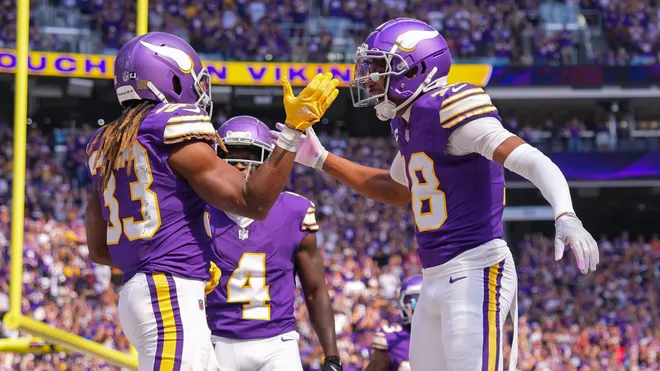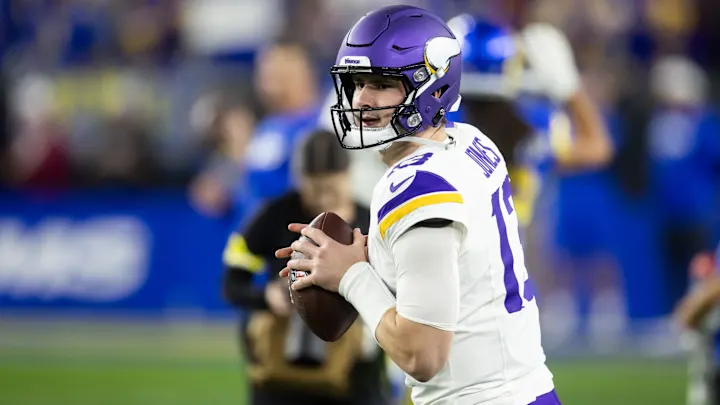
Daniel Jones reportedly chose a new opportunity with the Indianapolis Colts over remaining with the Minnesota Vikings, even though it meant accepting less guaranteed money. This decision had a ripple effect on the Vikings’ offseason quarterback strategy, especially as they had expected Jones to stay and possibly serve as a veteran presence behind rookie J.J. McCarthy.
The Minnesota Vikings eventually secured their quarterback lineup by trading for Sam Howell during the NFL Draft weekend. Howell joins McCarthy, the projected starter, and Brett Rypien, currently serving as the third option. However, prior to this acquisition, the Vikings were under the impression that Jones would remain in Minnesota. According to NFL insider Tom Pelissero on the Ross Tucker podcast, the Vikings believed Jones would come back to serve as McCarthy’s backup, and perhaps compete for the starting job early on. But that changed abruptly.

Pelissero revealed that at the last moment, Jones decided to take a different route. He reportedly passed on a better financial offer from the Vikings to join the Colts, prioritizing opportunity over salary. “It sounded like the Vikings thought Jones was coming back,” Pelissero said. “Then they just got the sense right at the end that he was not convicted about coming back to Minnesota and ended up taking a little bit less in terms of guaranteed money from the Colts to end up in Indianapolis.”
There appears to be a logical explanation for Jones’ decision. In Minnesota, the quarterback situation has largely been framed around J.J. McCarthy as the future face of the franchise. Despite head coach Kevin O’Connell not officially naming him the starter, the team has given every indication that McCarthy will be the main guy going forward. That environment likely wouldn’t have left Jones with a real chance to earn significant playing time.
On the other hand, Indianapolis offers a more open path to the starting job. Last season, Colts starter Anthony Richardson showed inconsistency and was ultimately benched in favor of veteran Joe Flacco. That move signaled some doubt within the organization about Richardson’s future. Jones likely saw this as a better environment to re-establish himself as a starter in the league.
After spending several years as the starting quarterback for the New York Giants, Jones is clearly not ready to transition into a full-time backup role. He still believes he has more to offer as a starter. The move to the Colts gives him a more realistic shot to prove that, even if it comes with less financial security.
However, challenges remain. Indianapolis has undergone significant roster changes, including the loss of two top offensive linemen to the Vikings, which could make things difficult for Jones behind center.
Though the Vikings were caught off guard by Jones’ decision, they have managed to recover relatively well by securing Sam Howell and maintaining a deep quarterback room. Still, Jones’ unexpected choice highlights how even modest shifts in a player’s goals can disrupt an NFL team’s offseason plans.
Leave a Reply